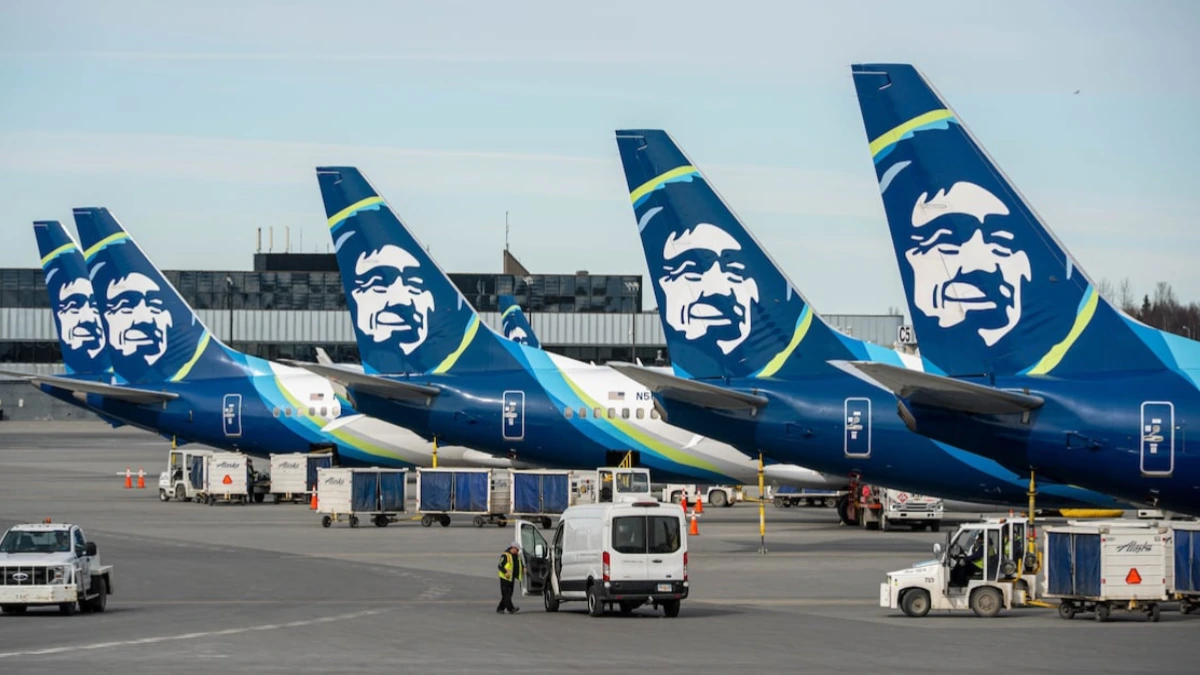SEATTLE (TECHY QUANTUM) — A widespread Alaska Airlines outage forced the carrier to ground all of its flights nationwide Thursday evening, disrupting travel plans for thousands of passengers and prompting a temporary ground stop across multiple airports.
The airline said an “IT outage” had severely impacted its operational systems, halting flights for both Alaska Airlines and its regional subsidiary, Horizon Air.
The Federal Aviation Administration confirmed the carrier requested a ground stop lasting more than two hours as technical teams raced to restore functionality.
“Alaska Airlines is experiencing an IT outage affecting operations. A temporary ground stop is in place,” the airline said on social media. “We apologize for the inconvenience and appreciate our guests’ patience.”
This Alaska Airlines outage marks the second major system failure in less than four months, following a July disruption that also forced the airline to briefly suspend operations.
Alaska Airlines, headquartered in Seattle, operates over 1,200 daily flights to 120 destinations across North America. Thursday’s Alaska Airlines outage quickly rippled through the US aviation network, grounding aircraft and leaving passengers stranded from Los Angeles to Anchorage.
The FAA’s advisory system showed the ground stop began shortly before 8 p.m. Eastern Time. While the airline has not released technical details, aviation analysts suspect the issue may involve flight planning or dispatch systems both crucial for takeoff authorization.
The airline faced a similar event in July when a “network connectivity issue” forced a three hour pause in operations.
“This latest Alaska Airlines outage highlights how vulnerable modern aviation systems can be to technical failures,” said Jason McGuire, an aviation technology analyst at AeroData Consulting.
“Airlines depend on vast digital ecosystems, and even a small disruption in data synchronization can paralyze the entire network.”
Experts say such outages are becoming increasingly common as airlines depend on complex digital frameworks to manage everything from ticket sales to aircraft routing.
“When one link in that system fails, it affects everything from pilot scheduling to baggage tracking,” said Dr. Laura Epstein, professor of aviation systems at the University of Washington. “A single network failure can delay hundreds of flights simultaneously.”
Robert Chambers, an aviation safety consultant, said that while an Alaska Airlines outage poses no immediate safety risk, it reveals a broader issue in the industry: aging IT infrastructure.
“Airlines have invested heavily in digital transformation but often rely on outdated legacy systems,” Chambers said. “That’s like building a skyscraper on an old foundation efficient on the surface, but fragile underneath.”
He noted that the Department of Transportation has urged airlines to modernize their IT infrastructure following a series of high profile incidents, including Southwest Airlines’ 2022 meltdown that left thousands stranded.
According to FlightAware data, the Alaska Airlines outage resulted in at least 150 cancellations and more than 300 delays in the first few hours. The impact extended to its regional partner, Horizon Air, which also suspended operations during the system failure.
Alaska Airlines transports roughly 48,000 passengers daily. Even a few hours of downtime can disrupt travel for tens of thousands of customers.
By comparison, Southwest’s 2022 operational breakdown led to over 16,000 cancellations in one week and cost the company more than $825 million.
“This Alaska Airlines outage won’t reach that scale, but it’s still a major operational setback,” McGuire said. “The recovery phase repositioning aircraft and reassigning crew can take up to 24 hours after the systems are restored.”
At Seattle Tacoma International Airport, Alaska’s main hub, passengers described scenes of confusion and frustration.
“I was supposed to fly to San Francisco tonight, but they just told us all flights are grounded,” said traveler Emily Rodriguez. “No one knows when we’ll be able to board again.”
John Price, another passenger, said the airline’s app and website were also down. “I tried checking in online, but it just showed an error message. The staff said it’s a system wide issue.”
On social media, Alaska Airlines confirmed that its digital platforms including its mobile app and website were affected by the Alaska Airlines outage.
“We are experiencing system errors and our IT team is working quickly to resolve them,” the company wrote in response to a user on X.
As of late Thursday, Alaska Airlines had not provided a timeline for restoring normal operations but said teams were “making steady progress.”
Dr. Epstein believes the airline’s response reflects lessons learned from prior disruptions “Communication transparency helps retain customer trust. They’re clearly trying to manage expectations and avoid panic.”
The FAA confirmed that the Alaska Airlines outage was isolated to the carrier’s internal systems and did not affect other US airlines.
Industry experts expect the airline to conduct a comprehensive internal review and may accelerate ongoing IT modernization projects.
The Alaska Airlines outage serves as a stark reminder of how dependent modern air travel has become on technology and how a single failure can halt an entire network.
While operations were expected to resume gradually overnight, passengers across the US faced continued delays and cancellations.
As Alaska Airlines works to restore systems and rebuild schedules, analysts say the incident will likely renew industry wide discussions about infrastructure resilience in an increasingly digital aviation era.

